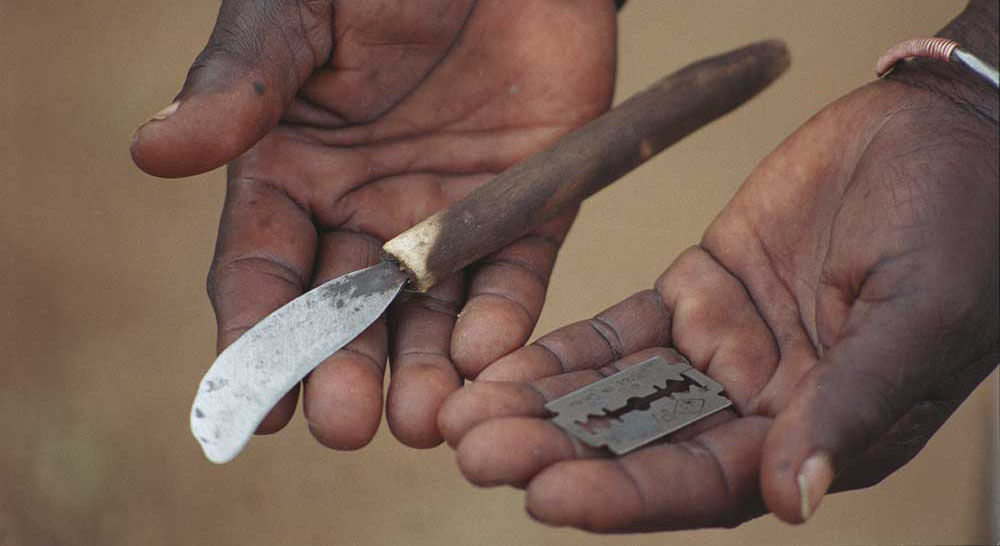Osogbo, NIGERIA — Southwestern Osun state is the most culturally rich and traditionally vibrant state I have visited in this country. It’s called the “ancestral home” to the Yoruba-speaking people, who include Christians, Muslims and traditional worshippers.[modern_footnote]The Land And The People Of Osun: History, Facts And Figures. http://www.nairaland.com/1898164/land-people-osun-history-facts. Accessed: 11/22/2017[/modern_footnote] From the drum-heavy Yoruba music that played in all public vehicles I rode to the residents’ respectful and welcoming manner and dress, the culture is pulsating.
But Osun (pronounced “Or-SHOON”) also has the highest number of women and girls who have undergone female genital mutilation (FGM; locally known as Abe Dida) in Nigeria, with a prevalence rate of 76.6 percent.[modern_footnote]UNFPA/Action Health Incorporated. FGM/C in Nigeria: Telling Stories, Raising Awareness, Inspiring Change.[/modern_footnote] Despite that alarming statistic, many Nigerians are not even aware the decades-old practice still takes place. That’s because FGM—which the state defines as “all procedures that involve partial or total removal, cutting or incision of the female external genital or injury to the female genital organ”—is community-based.[modern_footnote] Osun State of Nigeria. Osun State Female Circumcision and Genital Mutilation (Prohibition) Law. 2004.[/modern_footnote] In Osun, it is a socio-cultural and religious (Islamic) practice that typically takes place eight days after the birth of a female child. Until 2015—when the United Nations Children’s Fund (UNICEF) and the United Nations Population Fund (UNFPA) initiated a Joint Program on FGM—not much attention had been given to eliminating the practice, despite a state “Female Circumcision and Genital Mutilation Prohibition Law” passed in 2004. However, recent efforts to educate local communities are beginning to make headway.
FGM takes many forms. According to a publication by the UNFPA, “there is no formalized way of circumcising women in Nigeria, but there are similarities in the ways FGM is performed.”2 Saidiat Adeyemo, a native of Osun state, circumcised her daughter at 40 days old after Saidiat’s mother-in-law initiated the plan to mutilate the baby. The two women took her to the home of the Olola (Yoruba for “circumciser”). The elderly man required that Saidat bring a snail for the procedure. “He had a small knife. I think that’s the knife he typically uses,” Saidiat told me with an emotionless face. Her mother-in-law held the wailing baby during the procedure, which lasted around 15 minutes. After the cutting, the Olola applied mucus from the snail to the injury, ostensibly to stop the bleeding and aid the healing process. Saidiat remained outside the room because she could not bear the baby’s wailing. Afterward, she was asked to breastfeed the crying child. When I asked her to describe the healing process, she told me matter-of-factly, “I did not look at it [the wound].”
Saidiat also told me she was never interested in knowing why girls are circumcised. “I did it because it’s the normal tradition.” When I asked if she herself was mutilated, she told me, “I don’t know. I never asked.” She continued, “I don’t even think about [FGM]. I don’t think of it as anything.” She had never thought of the practice as harmful.
Perspectives of a circumciser
I visited the home of the circumciser who had performed the procedure on Saidat’s daughter in a community called Atelewo. His elderly wife answered the door and informed me that her husband had been dead for two years and asked to remain anonymous. She told me her children had taken over from him as circumcisers. We spoke in Yoruba. “We practice female circumcision because it is an instruction from God,” she said. “He instructed us to cut away the bad vaginal tissue [the clitoris]. But now that civilization has found its way into our culture, the civilized people started telling us not to inscribe tribal marks again and now it’s female circumcision they want us to stop.”
The woman told me she is aware of the law banning FGM and that she believes the government must have good reasons for instituting it. “So we do not have a choice other than to stop it,” she concluded. “Thank God they haven’t stopped us from circumcising males, at least that still provides a source of income for us.”
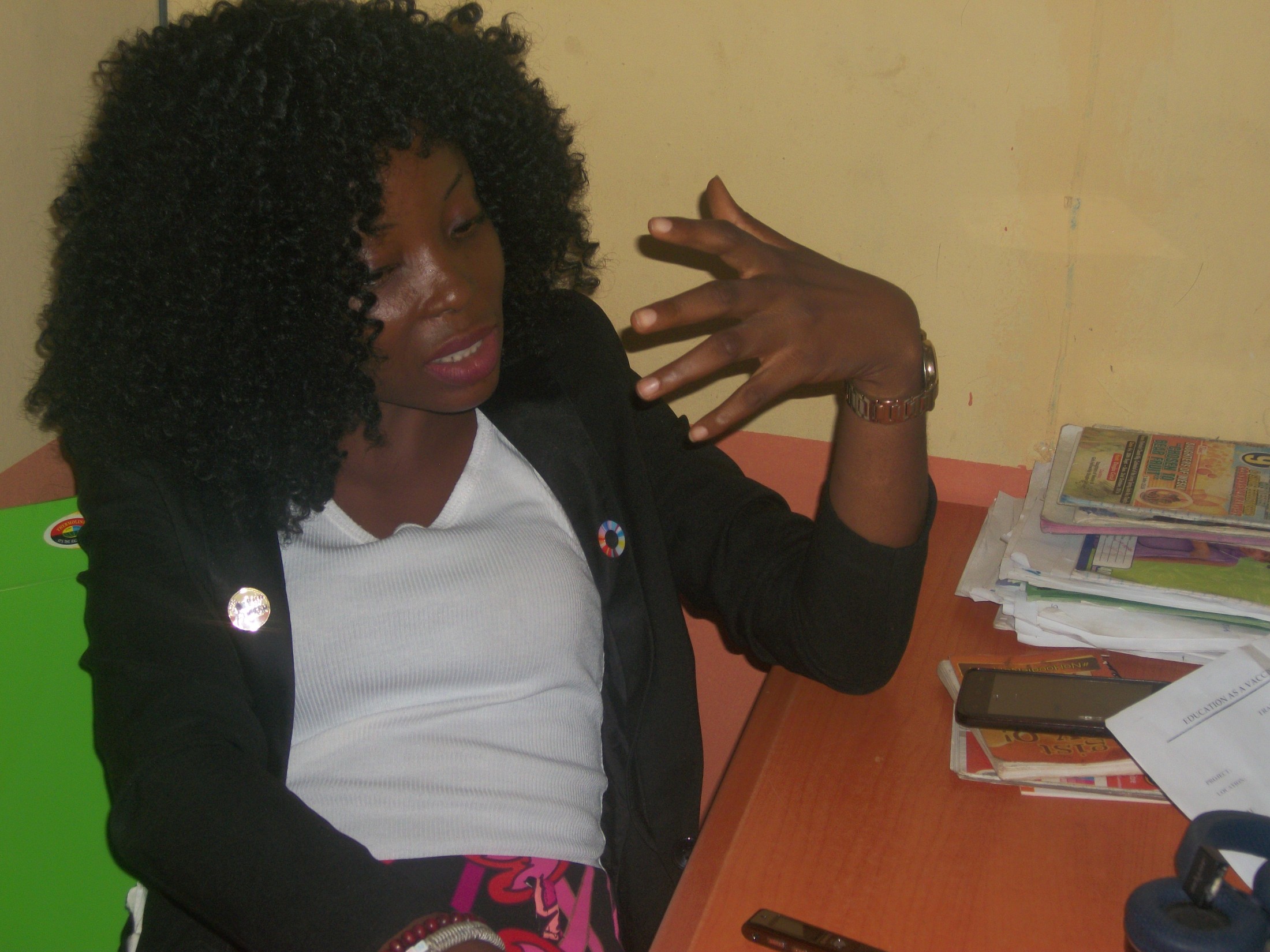
The circumciser’s wife blames the change in diet from traditional, healthy foods to the more processed fare Nigerians increasingly eat today for exposing women to greater risks of infection and other complications from FGM. “Myself and lots of women of my age who were circumcised experienced no adverse effect,” she said. “We gave birth safely and to as many children as God granted us.”
“This is because we took good care of ourselves and drank plenty of different herbal mixtures to avert any effects,” she added. “But nowadays, women and girls are not ready to do that. So, female circumcision has prevented a lot of women from giving birth and resulted in complications during child birth for others.”
“We did it because we had to”
Elizabeth’s mother didn’t want to circumcise her daughter. However, she felt compelled to carry out the practice in order for Elizabeth to avoid being tagged the “bad egg of the family.” The only girl in a family of three children, Elizabeth hails from the town of Ile-Ife in southwestern Osun. At 25 years old today, she only recently discovered that she was mutilated as a child. She experienced type-one FGM (clitoridectomy), which involves removing some or all of the clitoris. (See the diagram below for the types of FGM) Like in Saidiat’s case, Elizabeth’s mother told her “we did it because we had to.” It was the normal course for a girl after her naming ceremony (on the 8th day following birth). That way, she said, the pain does not hinder a smooth naming event. Elizabeth’s mother also succumbed to pressure from her mother-in-law. “[My mother] didn’t want to do it, but because my grandmother was staying with us, she had to do it to ensure that I would not become promiscuous,” Elizabeth added about a common belief about FGM. “[My mother] really didn’t know that it was bad because there was no enlightenment then.”
“Thank God they haven’t stopped us from circumcising males, at least that still provides a source of income for us.”
Elizabeth’s mother also was not present during the mutilation; she, too, could not witness her child in pain. Elizabeth was initially upset after finding out that she had been harmed. “Why would a mother who has experienced such pain do it to her child?” she said. She has resolved to advocate against the practice to keep other girls from being violated. “I will do everything in my capacity to end FGM,” she told me.

Most mothers do not intend to harm their daughters, but lack the power and authority to say no to the practice, especially in communities where tradition is held in high esteem. “They didn’t know that FGM is endangering the girl’s life. They think they are protecting her,” Elizabeth said of her relatives. Her mother has since apologized for allowing her to be mutilated. Although Elizabeth says she doesn’t hold a grudge against her mother, she feels anxious about getting married and engaging in sexual intercourse. “I’m scared of what will happen in the future because I was cut.”
Although FGM has been tied to Islam in Nigeria, it is not prevalent in the predominantly Islamic northern region of Nigeria. A woman in her mid-thirties named Ayesha (name changed) described a myth that during the time of the prophet Mohammed, wives were given to prophets as gifts. They were instructed not to pierce their ears or undergo circumcision. However, one of the wives did pierce her ears and circumcised herself because she was envious of her husband’s many other wives. That made her more beautiful than the others, so the other wives soon did the same, and it became a commandment from the great prophets that women should be circumcised and have their ears pierced.
But it’s difficult to precisely gauge religion’s role in the perpetuation of FGM in Nigeria. During my public conversations with Muslim leaders in Osun, they condemned FGM, saying it has no religious sanction. However, others in more private settings told me that FGM is commanded by the prophets and described in holy writing. Still, all agreed that FGM is not healthy and inflicts pain on women and girls. Ademola Adebisi (who goes by the nickname Mr. Adex), an advocate for the abolition of FGM and founder of the non-governmental organization Value Re-Orientation for Community Enhancement (VARCE), told me that the Islamic rationale for FGM comes from hadiths, which are believed to be reports about Mohammed. One hadith makes mention of “cut, but don’t remove” in reference to circumcising a female, he said. An Islamic scholar noted that “if it is found that circumcision is medically beneficial to females or to society, then it would be at the most something encouraged by Islam, as all things beneficial to life are regarded as commendable in religion. But if it is found, on the other hand, that circumcision is harmful, then it would definitely be regarded as something forbidden in Islam.”[modern_footnote]Female Circumcision in Islam (part 2 of 2): Circumcision amongst Muslims. http://www.islamreligion.com/articles/442/female-circumcision-in-islam-part-2/. Accessed: 12/07/2017[/modern_footnote]
However, the real reason behind the practice “is just the selfishness of men,” Mr. Adex said. In this part of the world—especially in Yoruban culture—men want many wives to help them with farm work. Once they discover they can’t sexually satisfy all their wives, they start mutilating girls to prevent them from having extramarital affairs when they get married, Mr. Adex said. FGM is seen as a means to protect and promote the sexual purity of girls and women.
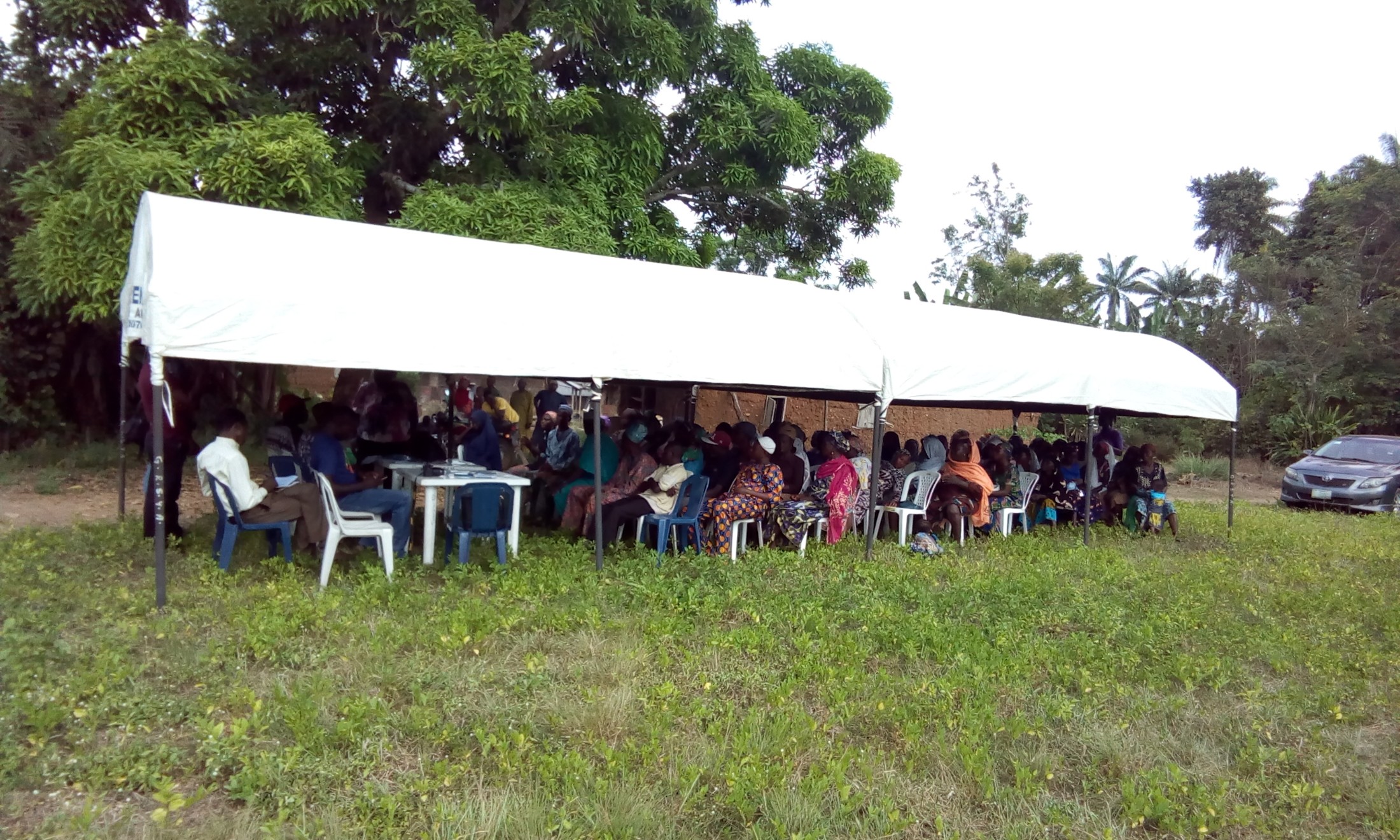
Community interventions
One morning, I hailed a taxi from Osogbo, Osun’s capital city, and headed to the Isokan local government area, an hour’s drive away. I was going to witness consensus-building activities with community leaders in two remote villages in preparation for their public declaration to abandon FGM.
The work took place over five days and culminated in a “declaration ceremony” in November, when 38 towns and villages came together to publically renounce FGM. Getting to the villages (Faru Alapomu and Mahun) required navigating very narrow, unpaved and remote roads surrounded by banana and plantain trees. Upon our arrival at each village, we met a gathering of middle-aged men and women dressed in local attire sitting under a canopy waiting for us. I accompanied staff and volunteers of the Joint Program on FGM (which includes UNFPA, UNICEF, the health and women affairs ministries, and the NGOs Action Health Incorporated and the Inter-Africa Committee on Traditional Practices Affecting the Health of Women and Children).
Representatives from those organizations spoke about the event’s purpose and discussed the negative impacts of FGM. The program ended with the unveiling of a medium-sized billboard declaring the community’s decision to abandon FGM. I spoke with the chief of Faru Alapomu village, Buliaminu Ogunola, who told me residents previously did not suspect FGM to be harmful. However, since the start of the campaign against FGM, the community decided to stop mutilating its girls. “FGM is something that our forefathers left for us, but with enlightenment, we now know the dangers,” he said.
Chief Ogunola has three wives and eight children (five girls and three boys). He mutilated two of his daughters. The other three were spared after he learned about the dangers. “We felt it was no longer necessary,” he said. When I asked him about the village’s next steps, he said, “we will stop FGM and if we see anyone doing it, we will enlighten them.”
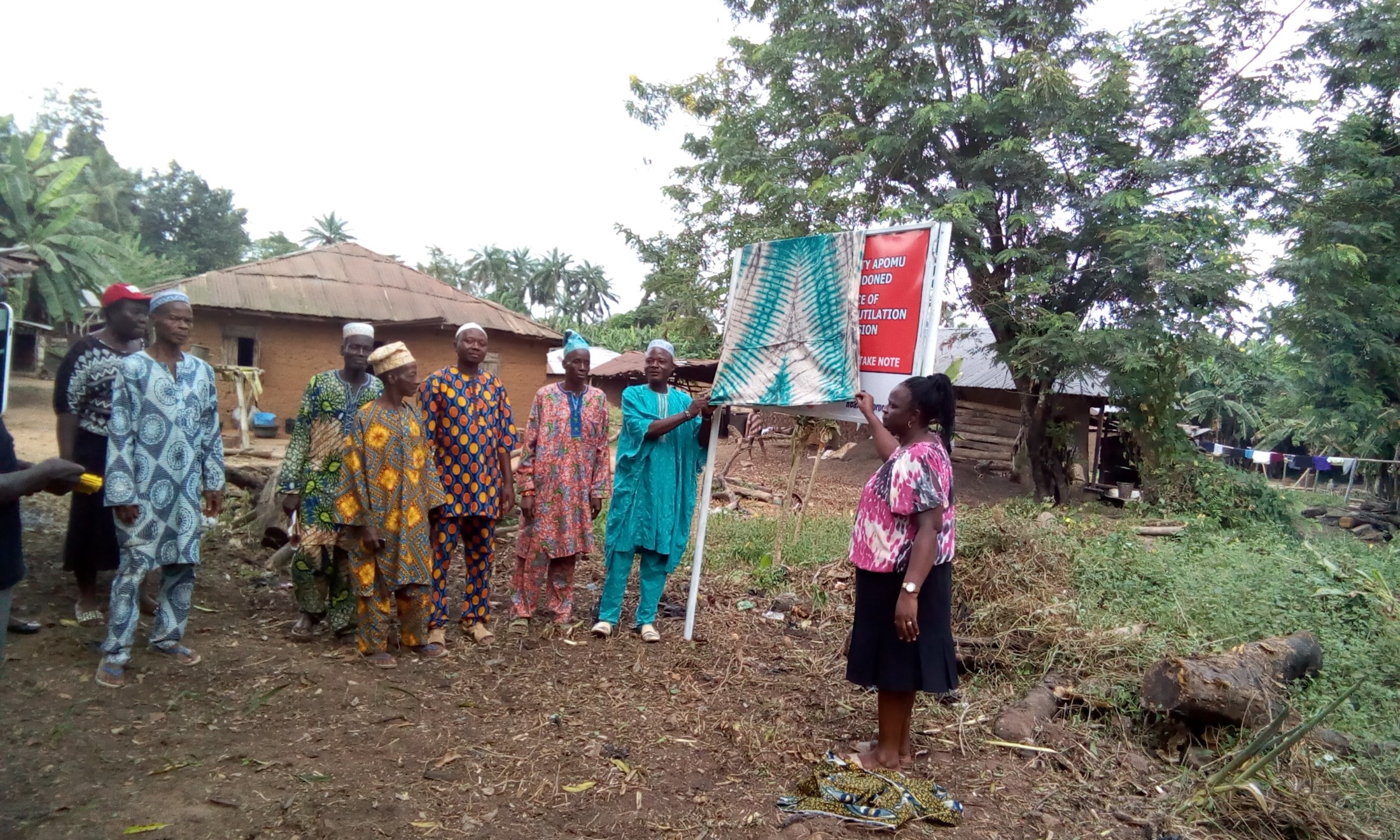
Ending FGM in Osun
Across Nigeria, a national Violence Against Persons Prohibition (VAPP) law bans the practice of FGM. However, enforcement remains a major challenge, compounded by cultural and economic factors. The Osun state law prohibiting FGM has been in existence since 2004, but many indigenous people were not aware of it until last year, when they learned about it thanks to the UNICEF-UNFPA anti-FGM advocacy activities. Efforts of local NGOs, including the Sheri Care Foundation—founded by the Osun governor’s wife Sherifat Abidemi Aregbesola—are raising more awareness.
However, it is mainly international donors like the UNFPA, not the state, that continue to fund advocacy and elimination projects. People found guilty of violating the state’s FGM prohibition law are subject to a year in prison, a fine of 50,000 naira or both on first conviction.3 On second conviction, both numbers double. But the law has done very little to stop the practice. And despite the widespread practice of FGM in many communities, no cases have been reported, a police officer in Osogbo told me. In Atelewo community, the women I spoke with were initially very hesitant to talk, fearing I would report them to the police for having mutilated their daughters and supporting FGM.
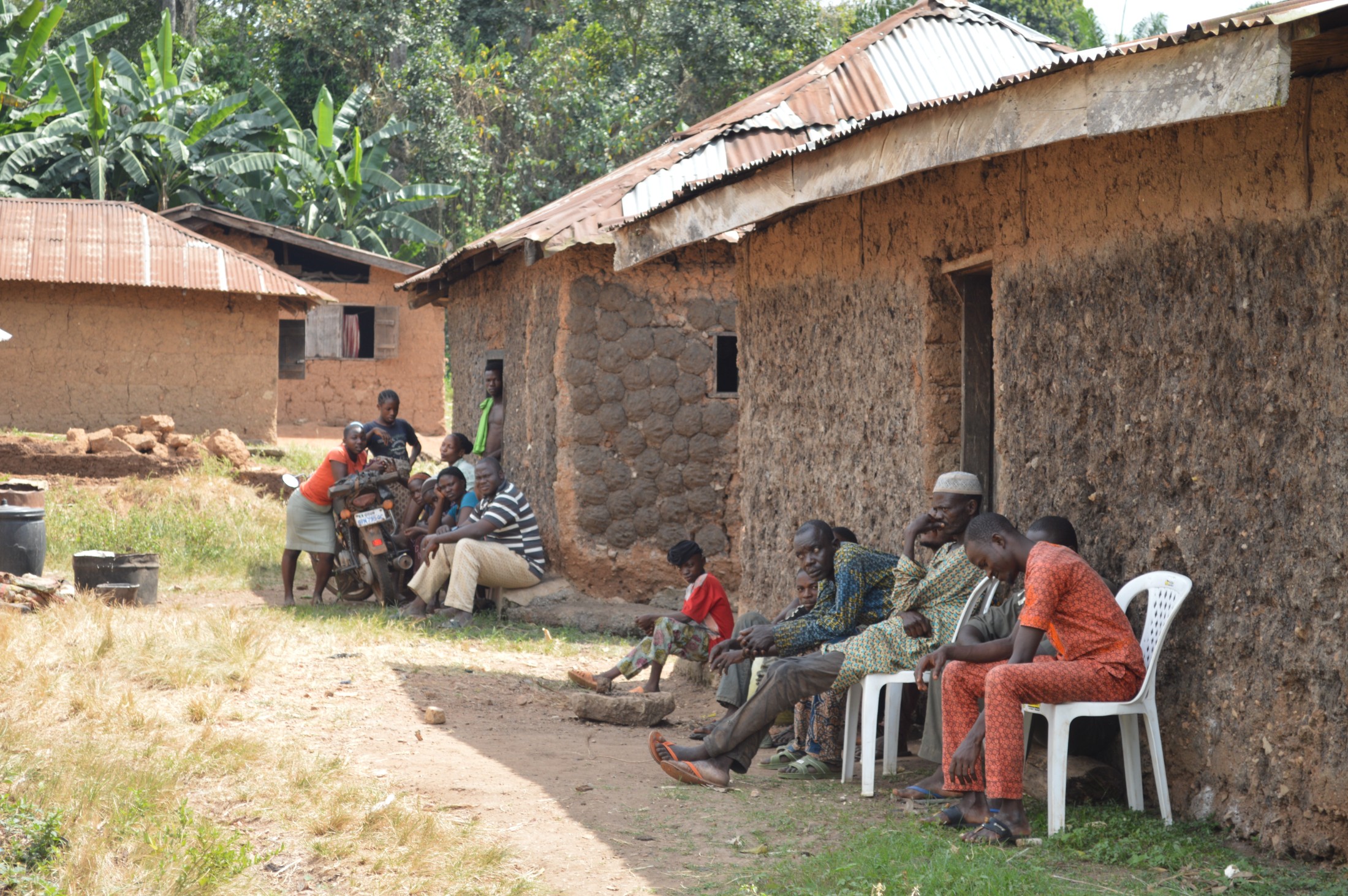
Mr. Adex believes educating young people is key for ending FGM. “I still find a lot of young people, particularly boys, who are yet to marry, telling me that they will mutilate their daughters because they don’t want girls to become promiscuous,” he said. He suggested incorporating FGM messages in marriage and child-naming ceremonies. “If you target young people, you will reach more people.”
FGM is driven by societal pressure and lack of proper education. Sensitization and advocacy efforts must be channeled at the community level, especially in hard-to-reach areas where tradition dominates. Despite the growing awareness of the health risks and legal stance against FGM, many women lack the power and authority to challenge tradition. If more women condemn the practice (because mothers and mothers-in-law are the ones who typically take girls to be mutilated), FGM can be eliminated. However, the challenge remains formidable, Elizabeth told me.
“You still find people who will perform FGM without anybody knowing,” she said. Like the campaign to end the traditional practice of killing twins successfully spearheaded here by the Scottish missionary Mary Slessor more than a century ago, it will take time to end FGM. Still, the United Nations’ Sustainable Development Goal of eliminating all such harmful practices by 2030—13 years from today—could very well be achieved. “It depends on how much and how well we make the knowledge go ‘round,” Elizabeth said.

